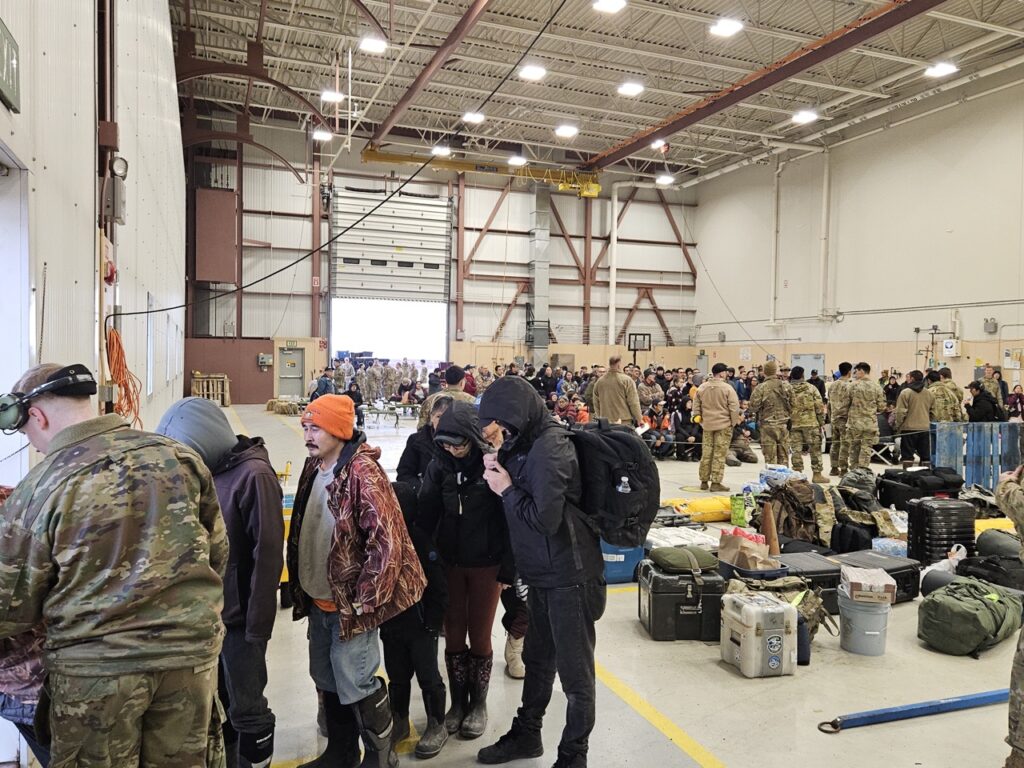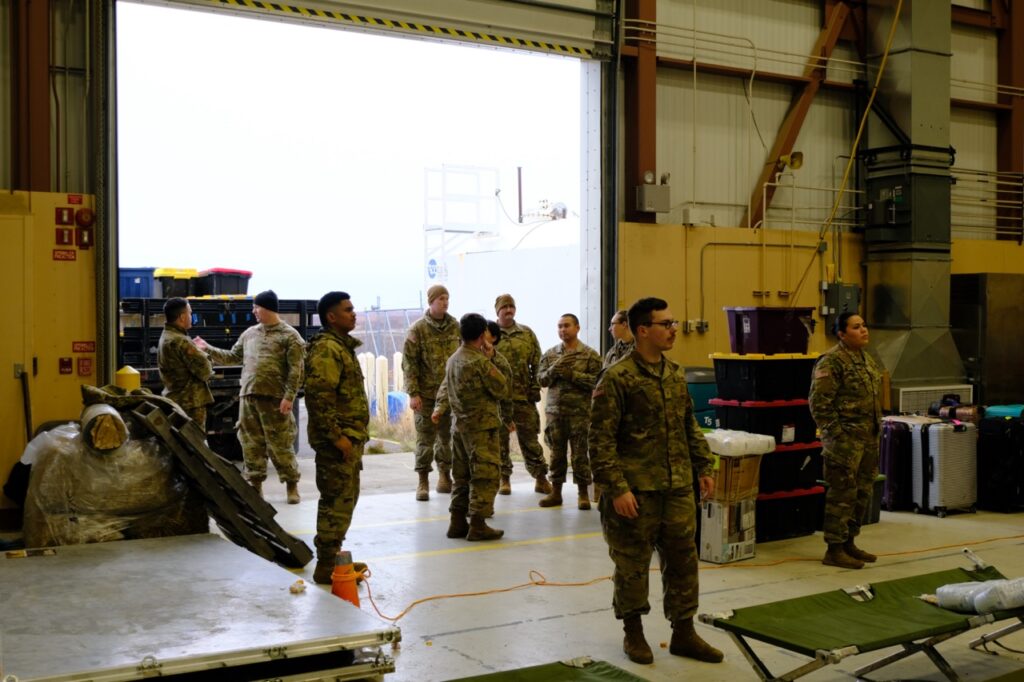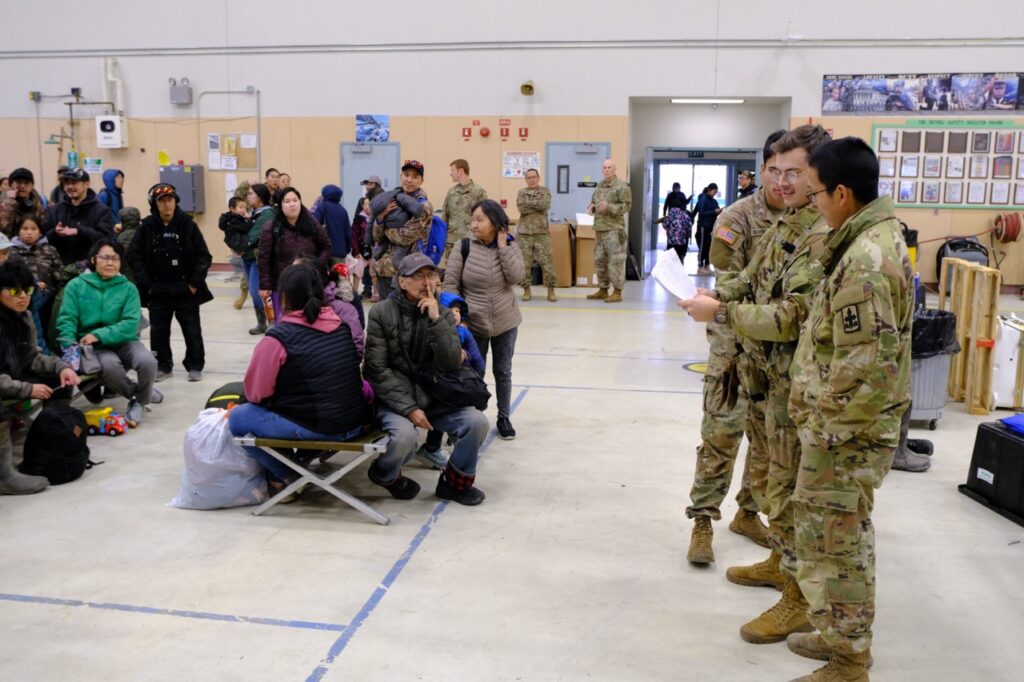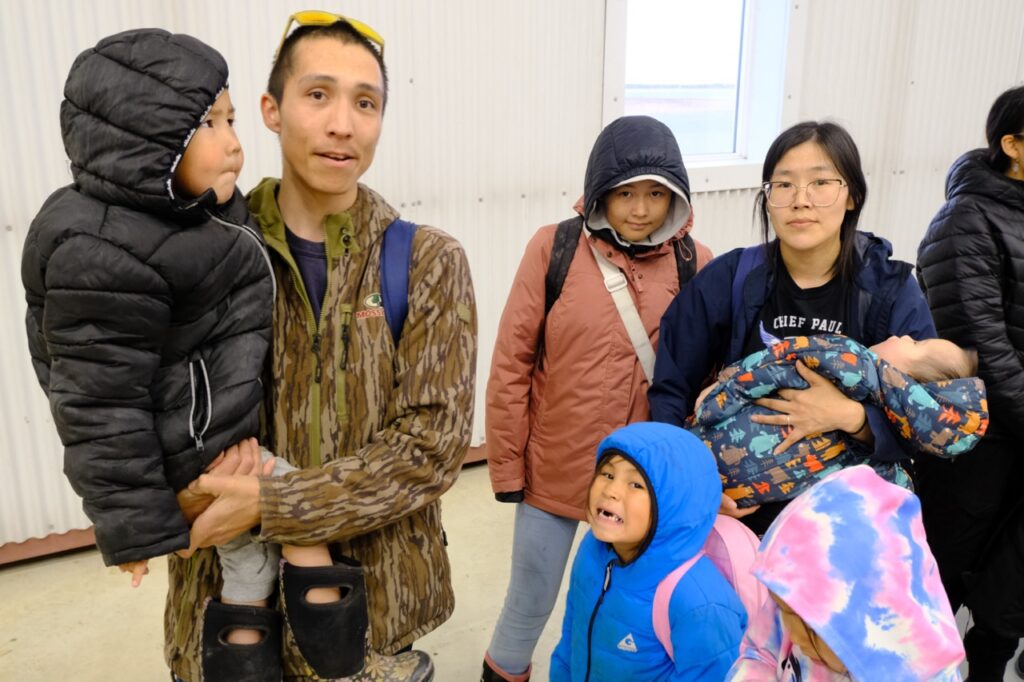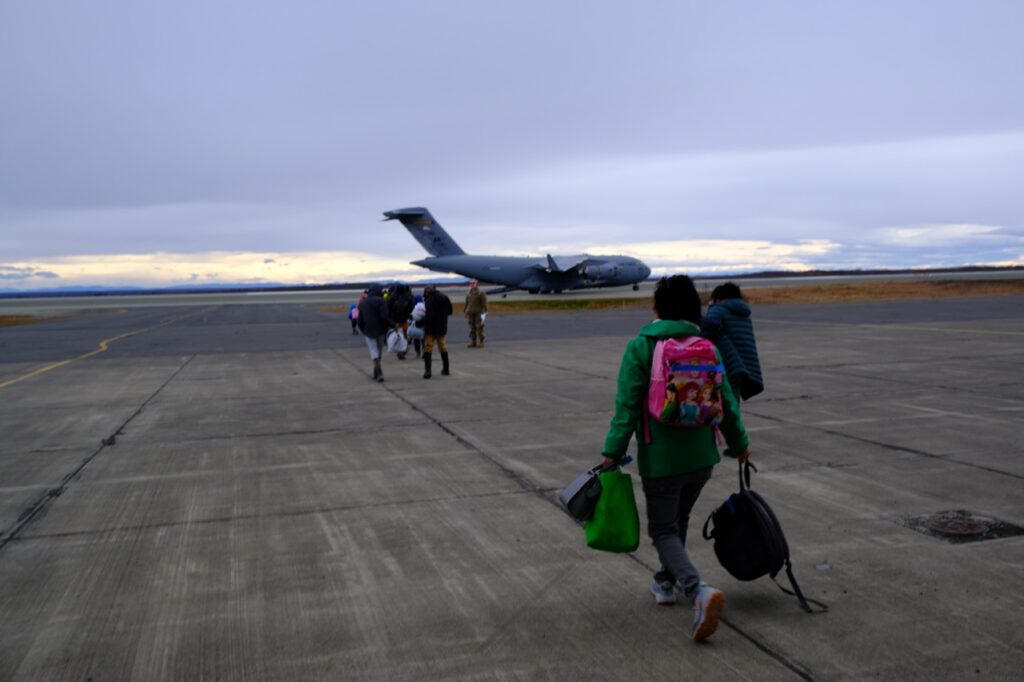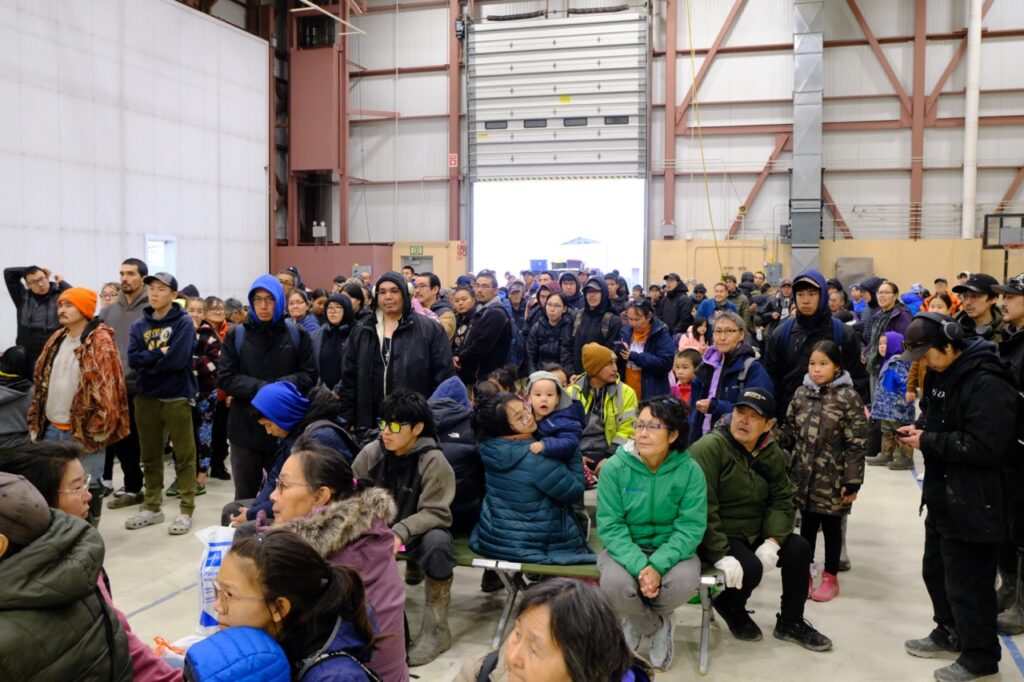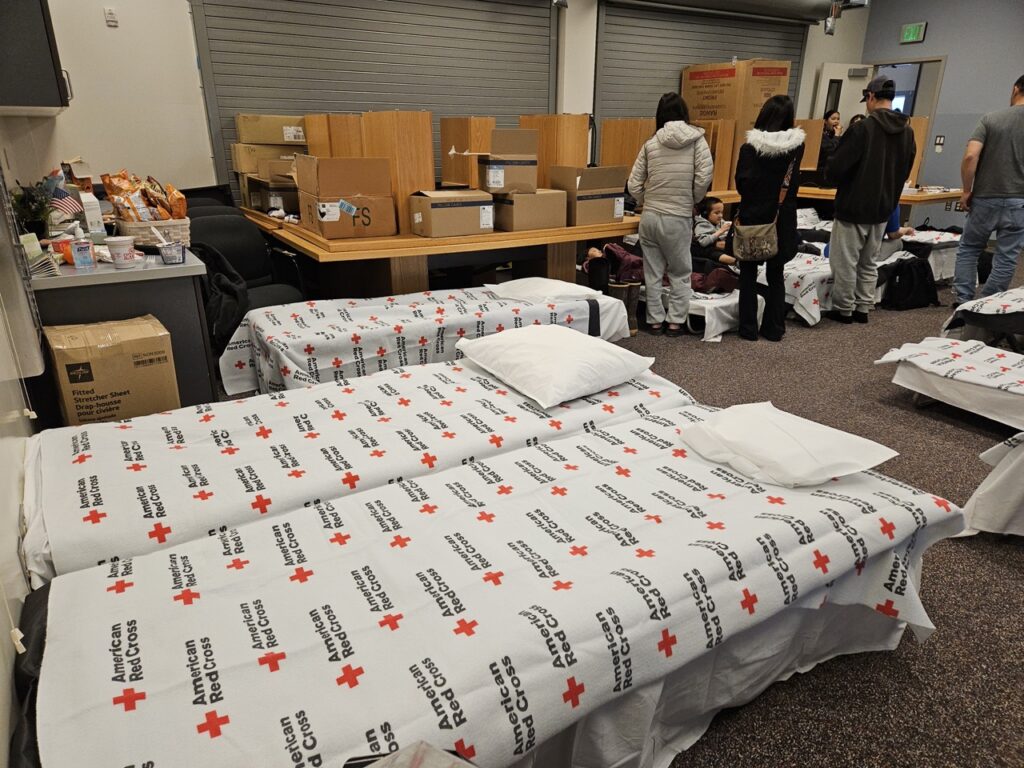This article was originally published by the Alaska Beacon.
Residents of Kipnuk and Kwigillingok began evacuating en masse on Wednesday, flying in military aircraft from their western Alaska communities which were devastated by ex-Typhoon Halong.
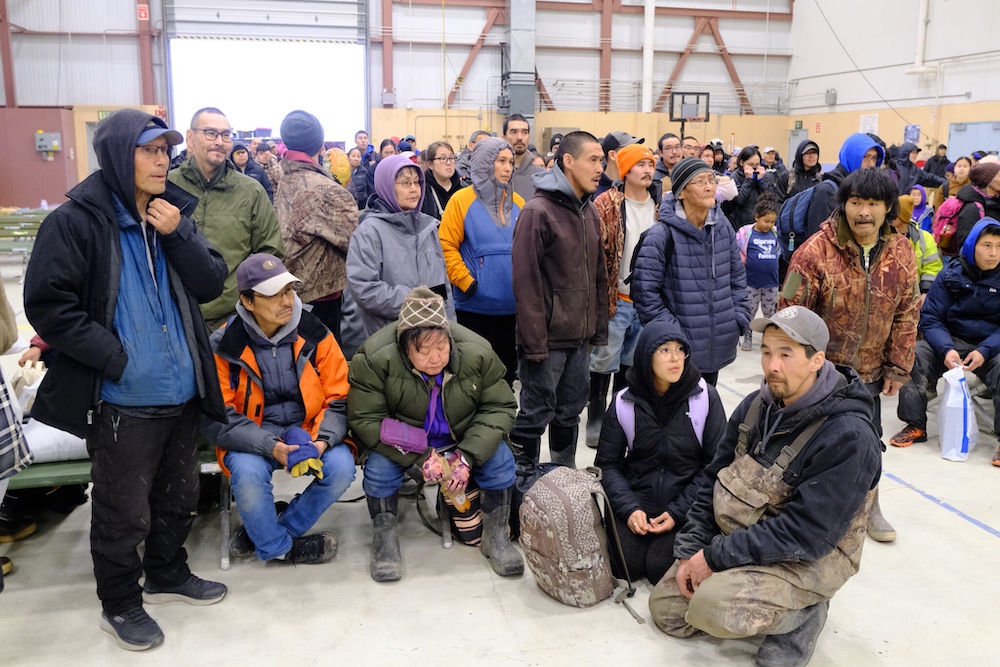
On Wednesday evening, the first 300 evacuees embarked on a C-17 military transport plane from Bethel to make the one-hour journey to Anchorage and emergency shelter there.
“Just devastated, feeling heartbroken, displaced,” said Jody Agimuk of Kipnuk, standing with his wife Kristin and their five young children, waiting in line to board in the Alaska Army National Guard hangar.

“I hope we find a place,” he said of arriving in Anchorage. “It’s hard to explain, I hope we won’t have a hard time finding a place.”
He said since the storm hit Sunday, they sheltered at their grandmother’s and one night at the local school, and evacuated on Wednesday. “It’s just hard — leaving families at home, separating with families that we were close to. People we’ve seen, people we knew, people we used to talk to, all the close relatives, it’s heartbreaking seeing people separating.”
The rest of the village of Kipnuk is scheduled to be evacuated on Thursday, and Kwigillingok by Friday, said Lieutenant Colonel Brendan Holbrook, commander of the 207th Aviation Troop Command with the Alaska Army National Guard.
He said roughly 500 people had been evacuated to Bethel so far out of those two villages by members of the Alaska Army National Guard and Alaska Air National Guard. The C-17 plane can only transport 300 people, so the rest would shelter in Bethel overnight and more flights would be available out to Anchorage on Thursday morning.
“I have five aircraft, four UH-60s, and CH-47 in support operations, doing evac. And we’ve been running basically 12- to 14-hour operations every day getting these people to safety,” he said.

In the Alaska Army National Guard Readiness Center in Bethel, evacuees waited, some resting on cots, as officers read lists of names and groups of 30 people at a time boarded the plane.
Holbrook said evacuation was self-organized by community members, with families with children and elders prioritized.
“So it was primarily Kipnuk today, if the call comes back, we can do Kwig (Kwigillingok) tomorrow,” he said. “But prioritization was just who was available and ready to go. So we would go to both and whoever got on got on. Kipnuk just happened to be, they had already established a marshaling plan, so as soon as we landed, they were ready with people to just start loading.”
Those who did not get on the Wednesday evening flight were sheltering in Bethel, some in an emergency shelter across the road from the Readiness Center hanger, administered by the Yukon-Kuskokwim Health Corporation with the support from the American Red Cross. Cots, showers, and meals were provided there.
Holbrook added that there is a misconception that evacuees must go to Anchorage. He said once in Bethel, regional tribal organizations like the Yukon-Kuskokwim Health Corporation are providing support for people to travel wherever they like. “If you have a place to go, another village, family, somewhere else, Y-K will help you get to where you need to go,” he said.
Below is a preview of the Alaska Beacon’s photography on the ground. For the full gallery, click here.
